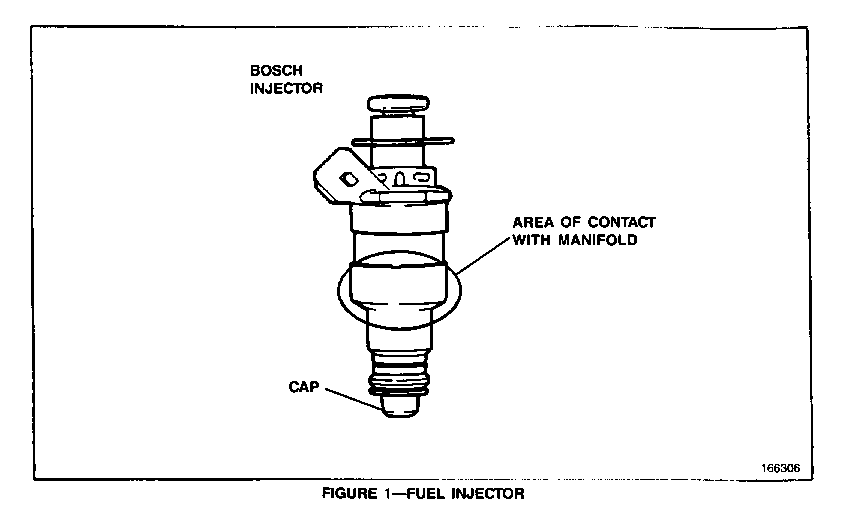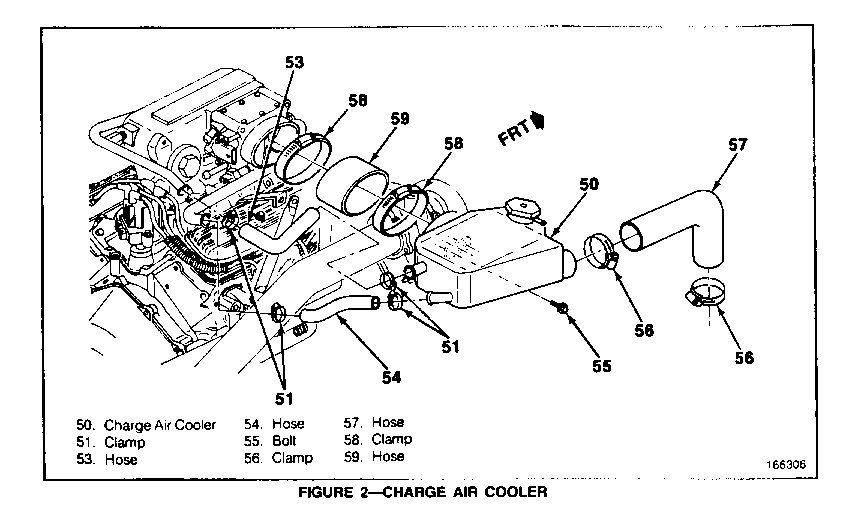HARD START/EXTENDED CRANK WHEN HOT (REPOSITION FUEL RAIL)

SUBJECT: HARD START, EXTENDED CRANK WHEN HOT, AND/OR TICKING FROM ENG. (REPOSITION FUEL RAIL)
MODELS: 1991-1992 T1 SYCLONE AND 1992 TYPHOON
Owners of some 1991-1992 Syclones and 1992 Typhoons may comment that their vehicle exhibits a hard start or an extended crank when hot. Also, some Syclone and Typhoon owners may comment that their vehicle exhibits a loud ticking noise from the engine. The ticking is usually the loudest around the fuel injectors. The hard start/extended crank as well as the ticking noise could be a result of the fuel rail pushing down on the injectors, allowing them to ground out between the manifold and fuel rail. Figure 1 shows the area of contact with the manifold. This condition may be corrected by positioning the fuel rail at its maximum height.
SERVICE PROCEDURE:
1. On a cool engine, use a 12 - 18 inch long, 3/8 inch drive extension and a 10 mm "swivel" socket to loosen the two fuel rail bolts (28) on the passenger side (Figure 3).
- The rear passenger side bolt can be seen slightly below and to the right of the fuel pressure regulator (30) (Figure 3).
- To access the front passenger side bolt, loosen the intercooler return pipe.
2. Loosen the two driver's side fuel rail bolts (28) (Figure 3).
3. Pull the fuel rail up, then tighten all four bolts (28) while holding the fuel rail in its highest position. The bolts should be torqued to 6.0 - 7.0 N.m ( 4.0 - 5.0 lbs. ft.).
Important
THE FUEL RAIL MOUNTING BRACKETS ARE SLOTTED ON 1991 AND EARLY PRODUCTION 1992 MODELS. AFTER INTERIM 1992, THE FUEL RAIL WAS REVISED, AND HOLES REPLACED THE SLOTS. IF THE FUEL RAIL HAS HOLES INSTEAD OF SLOTS, ADJUSTMENT IS NOT NECESSARY.
Important
THE FUEL RAIL MUST BE LIFTED TO THE HIGHEST EXTENT OF ITS TRAVEL TO ENSURE THAT THE INJECTOR BODY DOES NOT GROUND OUT ON THE INTAKE MANIFOLD.
WARRANTY INFORMATION:
For vehicles repaired under warranty use:
Labor Operation: T7381 Labor Time: 0.3 hrs.
Note: Labor Operation is coded to base vehicle coverage in the Warranty System.



General Motors bulletins are intended for use by professional technicians, not a "do-it-yourselfer". They are written to inform those technicians of conditions that may occur on some vehicles, or to provide information that could assist in the proper service of a vehicle. Properly trained technicians have the equipment, tools, safety instructions and know-how to do a job properly and safely. If a condition is described, do not assume that the bulletin applies to your vehicle, or that your vehicle will have that condition. See a General Motors dealer servicing your brand of General Motors vehicle for information on whether your vehicle may benefit from the information.
